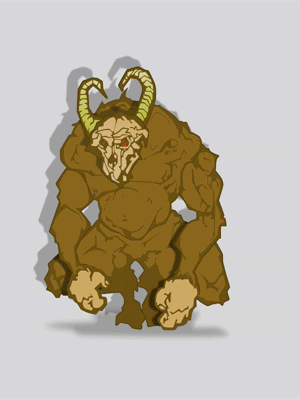it is somehow a bad idea or not so economical or practica
Exactly. Animation is not just make things move, it's about creating animation with the right tool for the purpose in a reasonable amount of time. If you're a freelancer or a studio boss you always juggle with a given time and a given budget, and the style and quality of animation is the result of the two. If you go the other way round (a certain style in a certain animation quality must be met) then time and budget will increase, sometimes infinitively.
I don't mention skills here because that's obvious. Animation skills, drawing skills, and experience with programs and workflow are a bigger factor (at least in small teams) than budget. A person with good experience in a software may outperform one with good drawing skills but who sucks at computers. But a lack of artistic skill will always show in the end, and no software in the world will ever cover that.
On the pixel level I'm able to produce nearly the same result either in AS or in TVPaint. But I would be stupid to do so, because a task which takes minutes in one program will take days in the other. The main advantage of all my experience is to know when to put the elements of a scene in one program and when in another in order to have a fast workflow. Things like "should I use point motion" or "is this done best with morphs" don't matter for me: I use whatever is useful, without making a religion of preferring one method over another. (In fact I still use v5.3 or 6.2, no blend morphs, no scripts, and no actions - I don't see any advantage in using those because the setup takes me longer than doing everything by hand.) (This of course may change if I had to rig characters for a series - in that case the time spent in preparation pays during production.)
The animator always has to decide which technique, which workflow, which program works best. If you take one step back, those decisions are made even earlier: on the storyboard level or even in the script. Most stories could be told in a variety of ways. The way they are told in commercial animation is chosen because it is the cheapest! This is especially true for TV series, in a lesser amount for features as well.
The result is that you only see things which can be animated easily and fast: holds, left/right pans, cycles, faces with blinks, hair in breeze, and so on. (The list is much longer and grows steadily with each new software doing one more trick automatically.) 80% of TV programming is made entirely from these simple elements.
Now imagine what you
don't see. You will not see more-than-90°-turns of characters. You will not see complex dance moves. You will not see feet. (Ever noticed how often "american" shots (as it is called in Europe) are used in animation, that is showing characters from the thighs up walking somewhere? That way you don't have to deal with all the little problems of feet sliding on the ground...) You will not see other than the 3 standard emotions. You will not see elaborately timed acting. - and so on.
"Full animation" is a term reserved for what you normally don't get to see: acting, expressive poses, carefully chosen keys and breakdowns, flawless and fluid inbetweens, no body parts on hold (= no limited animation), no artificial tweening or deforming, no limitation to movements in XY only, foreshortening of limbs, secondary action, follow-through(without any bone dynamics or physics engine), and so on. Full animation is frame-by-frame. It's the style with the biggest requirements to the animator's skills. (And it is, sadly, a Holy Grail among animators as well as just another marketing phrase in TV programming.)
And now the good part: you don't necessarily need it to make a good film.
You can make a good film just with cutouts. You can make a good film just with crappy drawings - if the story is right. You can make a good film entirely in one software, may it be as limited as can be. But to reach that goal (a good film) you have to be good - in choosing your story, your style, your technique. And you have to be critical and consequent.
I've noticed that the one ingredient which distracts me most in animation is the ill-fitting element. This can be poorly cut outlines in scanned elements, or one wrong colour, or a missing hold key in body parts which are supposed to not move. But I react most strongly on ill-fitted animation styles. For me there's a fixed connection between a certain graphic style and an appropriate way of animating it. The attributes are the kind of pacing and timing, the existence or absence of inbetweens, the number of inbetweens, the smoothness or jerkiness of movements, and so on. Certain combinations work, and others don't. This is what separates a perfect film from a good one, and a good one from a mediocre.
Not many of you will be familiar with Herbert W. Franke's "Phänomen Kunst", I suppose. In that essay he postulates that there's an "optimal range" of information per time which contitutes a satisfactory aesthetic experience. I found this to be true when watching animation. Most examples from this forum, but also much animation floating around elsewhere just isn't enough: not enough story, not enough movement, not enough colours, not enough texture, not enough sound. And some, very few, are too much (but they're really neglectable). And the sad point is that most of them could be improved so easily - with just adding some of the missing bits.
(And my own films are only "good".)

